
FAA orders airlines to install new fuel tank inerting system to reduce chance of explosion
Water mist and Hypoxic Air Suppression test
| IAI Faa Halon Replacement Agent MPS test fixture
Container load fires are located inside this device, Minimum Performance Standard for Aircraft Cargo Compartment Halon Replacement Fire Suppression Systems
|
|
||||
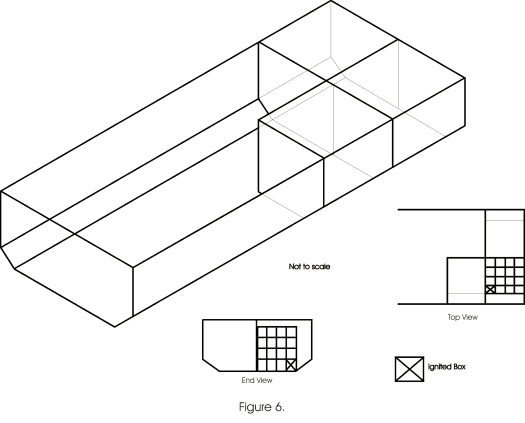 |
2000 CuFt
representation of a wide body cargo bay. LD3 containers are placed in
one corner. |
||||
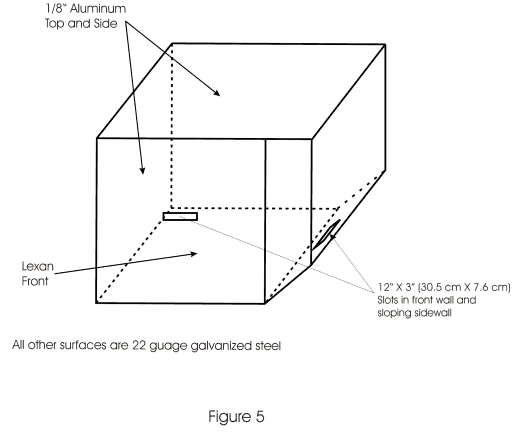 |
LD3 Cargo
container used for the test. |
||||
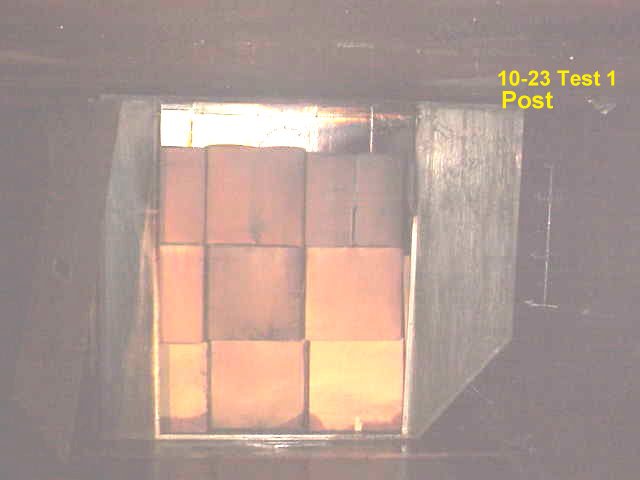 |
Post
fire test The access panel is removed revealing damage to the contents
from the fire. All right wall boxes are in tact |
||||
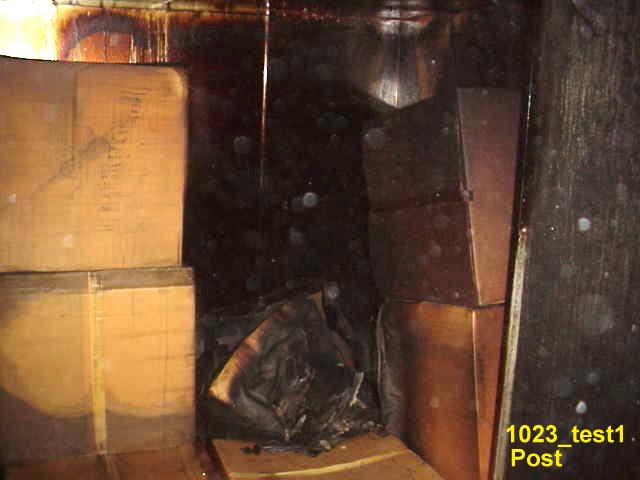 |
Row
2 outside boxes removed. Note the row one boxes are still intact. Row 2
center and top boxed have fallen into the fire during the test. They
blocked in inlet slit and forced the mist into the igniter and right
lower box. This is probably due to thermal currents created by the
fire. This prevented the fire from spreading to the Row 3 |
||||
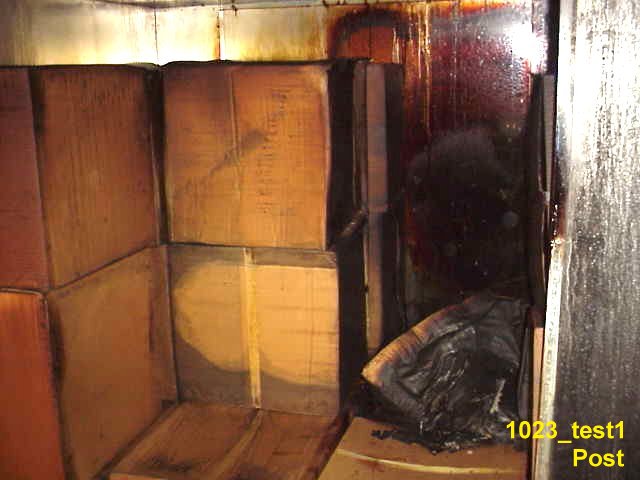 |
Note no
damage to row three and four. Although these show some heat discolor
and smoke stains there is no char |
||||
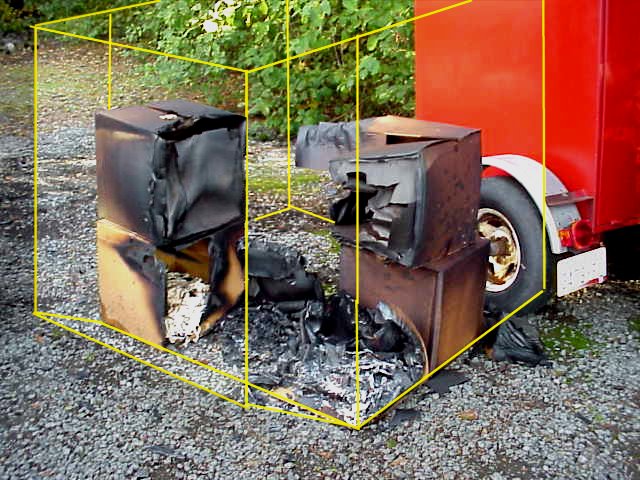 |
Reassembled
fuel load. Note the shredded paper in the row one right lower box. The
mist was able to extinguish this before it migrated into the deep
seated fuel pile. Boxes not shown were relatively undamaged, other than
some staining. |
||||
 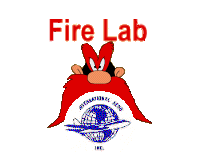 |
This
test series, considered to be one of the hardest to suppress is
typical of the efficiency of the Low Pressure Dual Fluid water mist and
Hypoxic air. With a small amount of water to control the flame
and
the Hypoxic atmosphere to attain extinguishment levels. Reduced flammability of airliners is our goal, At IAI Fire lab we are getting there |
||||
Home
US EPA, SNAP, ISO, ICAO, FAA US DOT, NFPA, SAE, FM, NIST, ATA, UL, SSL, AS/NZS, ODP , GWP , Pyrogen , PYROGEN , Airline Cargo conversions , Class A fire , Class B fire , Class C fire , EMAA, Encapsulated Micron Aerosol Agent, FAR 25. Aircraft Cargo Fires, Telecommunications fires , Transportation fires , Petrol chemical fires , Fire detection, Automobile Fire , Truck fires , Train fires , Building fires , Structural fires , petroleum fires , engine fires , marine fires , cargo fires , wood fires , Halon flooding , UL 1058, aircraft fire protection , aircraft crash , airline cargo fire , airline fire protection , FAA Technical center , Oil rig fires , gas rig fires , vehicle fires , electrical fire suppression , computer room fires , ship fires , machinery fires , merchant vessel fires , train fires , generator fires , battery fires , Wheel fires , brake fires , tire fires , car fires , home fires , Loss productivity , boeing fire test , 737 fire test , NRL , Naval Research Laboratory , Naval air systems command , NASC , NAVAIR , AS/NZS 4487:1997 , Joint strike fighter , JSF, HARC , NTSB , Transport canada , NIST , FAA Technical Center , Thermal Acoustic Insulation Blankets , IMO , International Maritime commission , USCG , United states coast guard , MCA , Pyrogen Ltd. Pyrogen Corp. Sdn. Bhd. , IAFC , IFPA ,